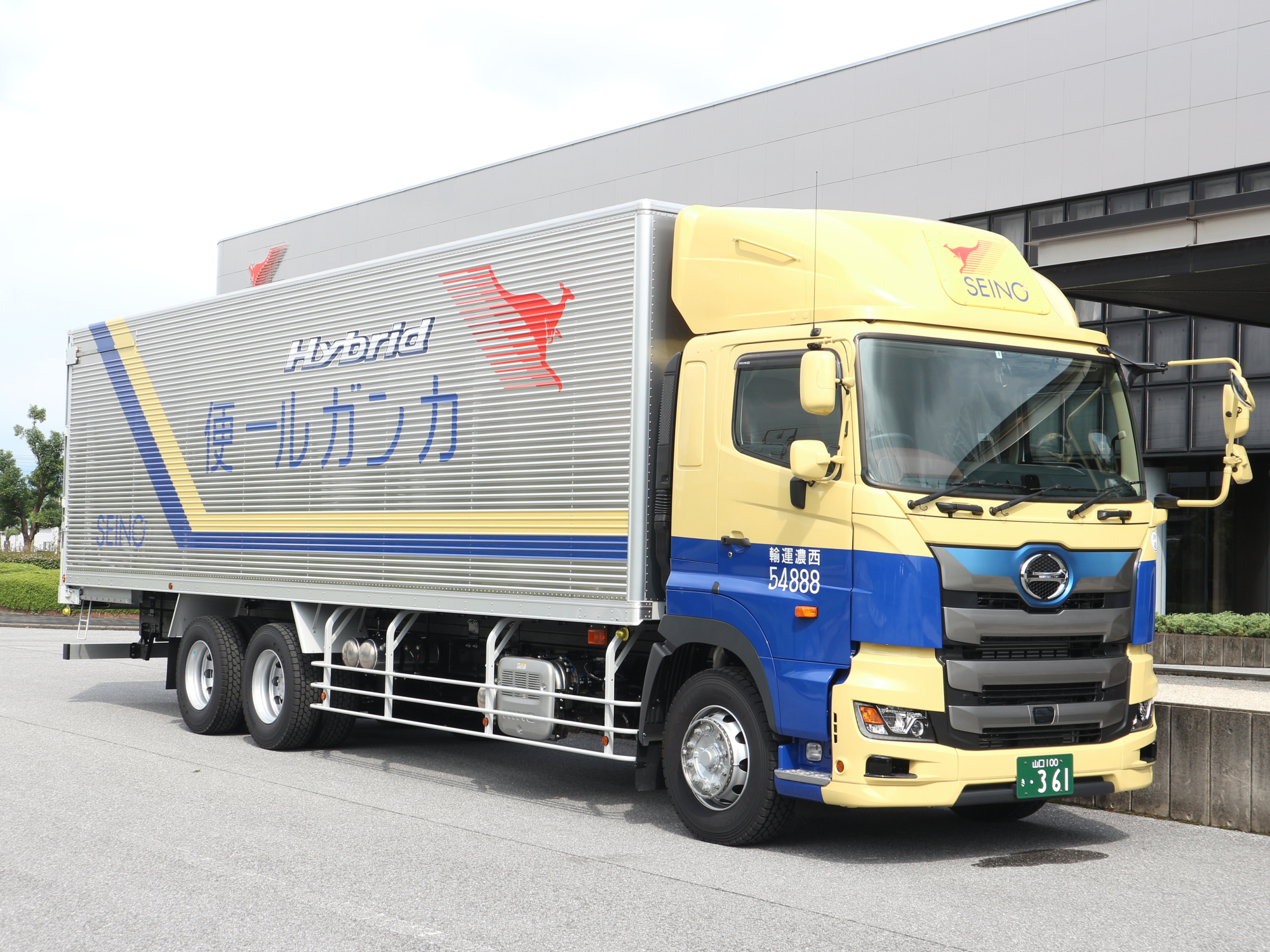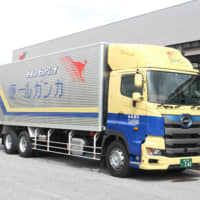Seino Holdings Co. is making sure it stands at the forefront of efforts to reduce carbon dioxide emissions in the economically critical transport industry.
The company, widely known for its trademark red logo of a hopping kangaroo, is based in the city of Ogaki in Gifu Prefecture. The Seino group consists of about 90 companies in Japan and Southeast Asia and specializes in getting goods safely and efficiently from one point to another via truck.
But with global attention increasingly focused on climate change and the need to rein in steadily rising global temperatures, the impact of fossil fuel-generated pollution has drawn increasingly detailed scrutiny. Nations that signed the landmark Paris climate accord in 2015 committed to efforts to limit global temperature rises during this century. Pressure is building on nations and corporations to achieve net-zero carbon emissions, also known as carbon neutrality, by 2050 as a key in limiting environmental damage to the planet.
Far from standing still, Seino Holdings' consolidated subsidiary Seino Transportation Co., alone and in cooperation with competitor transport companies, is actively working to lower carbon emissions in its industry, which is grappling with additional challenges to its impact on the climate.
For example, Japan is currently undergoing a dramatic demographic change in which the number of elderly citizens is increasing rapidly while the birthrate falls. That means the country's aging population is set to record a steep decline in coming decades, with huge implications for the supply and demand of labor.
Such effects are already being felt in the transport sector, where, according to the Japan Tracking Association, approximately 40 percent of truck drivers are 50 years of age or above.
To help ease the strain, Seino is taking advantage of a government regulatory change requested by transport companies that allows for a single truck to haul increased loads. That eases demand for drivers but crucially also has the ultimate effect of cutting carbon dioxide emissions at the same time.
In January 2019, the Ministry of Land, Infrastructure, Transport and Tourism increased the allowed length of cargo containers hauled by truck to 25 meters by hooking together two trailers pulled by a single vehicle. Known as SF25, for "super full trailer," test runs for the double-linked truck concept began in 2016. Seino Transportation began participating in 2018 with test runs centered on the Shin-Tomei Expressway linking Kanagawa and Aichi prefectures and other roads.
With the official regulatory loosening, Seino Transportation along with Nippon Express Co., Japan Post Co. and Yamato Transport Co. in March last year began working together on routes connecting the major Kanto and Kansai regions. The cooperation entails linking their trailers together to enable a doubling of cargo hauled by a single truck. As envisioned, that has been shown to reduce demand for drivers and also slash carbon emissions.
For example, from April of last year to the end of November, the four companies reported a total cut in driving distance from about 1.25 million kilometers to 623,508 kilometers, for a reduction of 50 percent. Carbon dioxide emissions, meanwhile, declined 36.4 percent to 1,526.2 tons of carbon dioxide from 2,401.5 tons of carbon dioxide.
In December the effort won a special award from the Green Logistics Partnership Conference, an organization established in 2005 under sponsorship of the transport ministry; the Ministry of Economy, Trade and Industry; the Japan Institute of Logistics Systems; and the Japan Association for Logistics and Transport. The Japan Business Federation, or Keidanren, is an observer. The group is focused on expanding partnership efforts among freight and distribution businesses to reduce carbon emissions.
Seino has also worked to take advantage of the latest technology to help reduce emissions by utilizing Hino Motors Ltd.'s Hino Profia Hybrid large truck from September of last year.
The vehicle, painted in Seino's blue and yellow livery, is the first hybrid truck in the world to use an array of artificial intelligence technology. That utilization allows it to anticipate and grasp various factors along a route such as the effect of the load, as well as inclines as much as 100 kilometers ahead. The vehicle can therefore achieve optimum results in switching between hybrid and fuel functions.
"As a corporate citizen, Seino Transportation is always careful about traffic safety and also enthusiastically tackles environmental issues," the company said in a joint press release with Hino in September upon taking delivery of the vehicle. "We introduced (the truck) as part of resolving environmental issues."
This series highlights ESG (environmental, social a




















With your current subscription plan you can comment on stories. However, before writing your first comment, please create a display name in the Profile section of your subscriber account page.